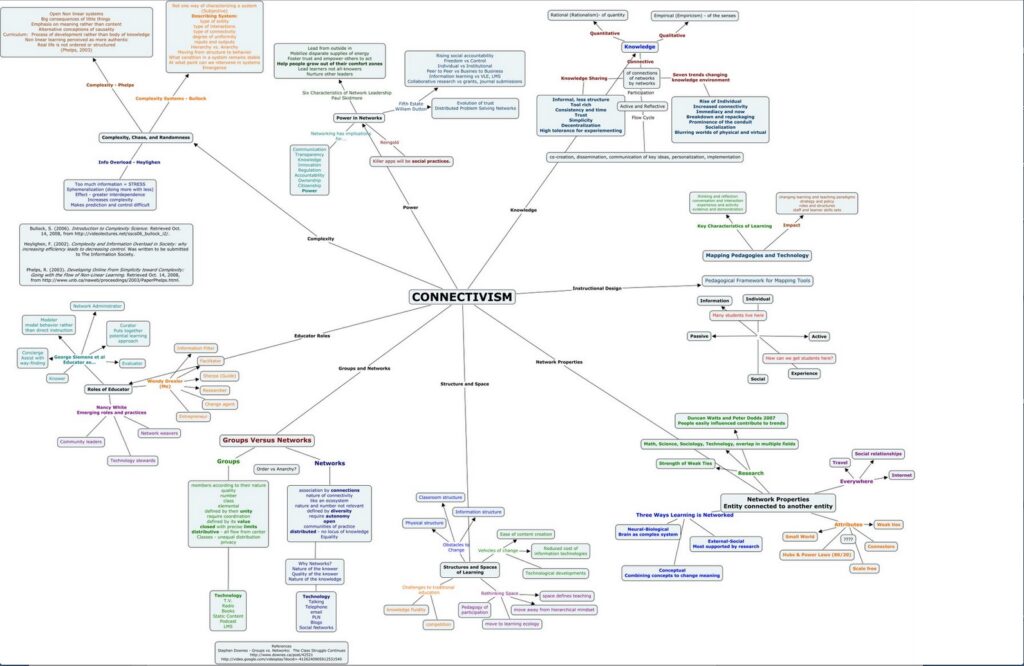Blog Post #3 – Connectivism
What is Connectivism
Connectivism is defined as the “collective connections between all the nodes in a network that result in new forms of knowledge.” Nodes act as connective blocks, such as a library that connects many books, or a friend in a friend group that everybody knows. Connectivism connects sources of knowledge into a single network. Navigating this network of knowledge is where learning can happen. Below is an image of a map of connectivism, according to Anthony William (Tony) Bates (2015). Connectivism is made up of multiple components: knowledge, instructional design, network properties, structure and space, groups and networks, educator roles, complexity, and power.

Access to the source document can be found here.
Connectivism in Learning
Learning in a connected network is characterised by following “significant” flows of information to obtain actionable knowledge. Effectively, you learn by (re)searching the network of nodes. This helps learners find accurate and relevant information if they are able to find a significant node, as it gives them a lot of information to look through. An example would be: a student accessing Ebsco to look for (specifically) diabetes-related literature. Finding the correct node in Ebsco will make the research more accurate than simply searching Ebsco aimlessly. Likewise, in teaching you must set learners on the correct path to access the best nodes for their individual learning journey.
References
Bates, A. William (Tony). (2015). BC Campus. 2.6 Connectivism. Teaching in a Digital Age. https://opentextbc.ca/teachinginadigitalage/chapter/3-6-connectivism